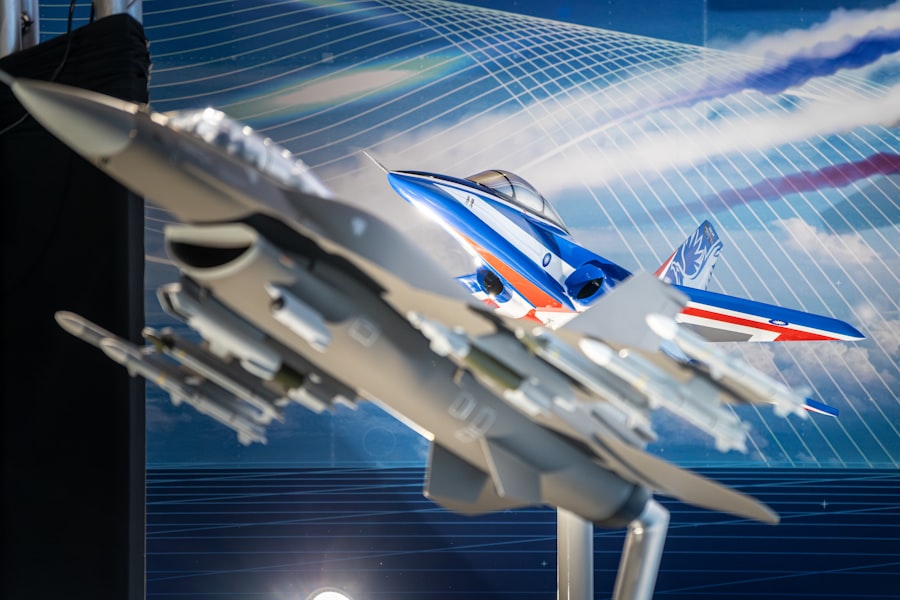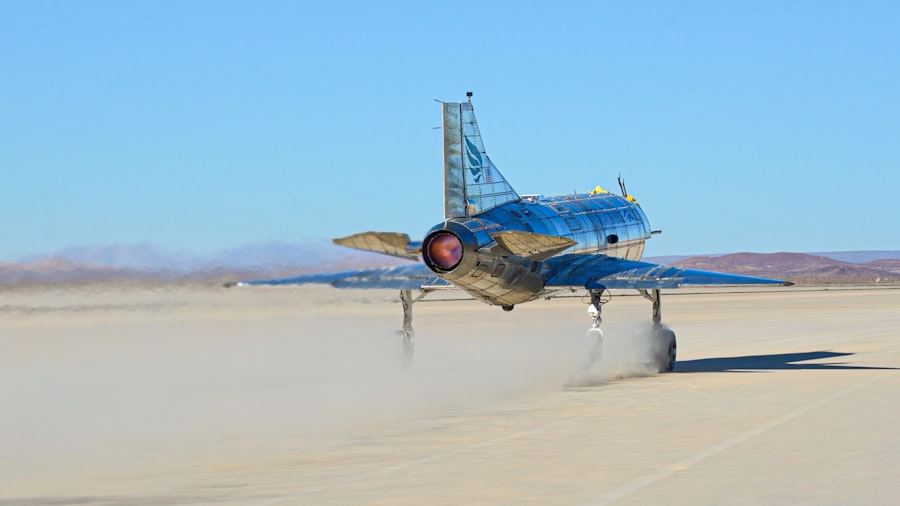Aerospace and defense technology represents a critical intersection of engineering, innovation, and national security. This sector encompasses a wide array of disciplines, including aeronautics, astronautics, and military systems, all of which are essential for the advancement of both civilian and military capabilities. The aerospace industry is responsible for the design, development, and production of aircraft, spacecraft, and related systems, while the defense sector focuses on technologies that enhance national security and military effectiveness.
The rapid evolution of these technologies has been driven by the need for improved performance, safety, and efficiency in an increasingly complex global landscape. The significance of aerospace and defense technology extends beyond mere functionality; it plays a pivotal role in shaping geopolitical dynamics and influencing economic growth. Countries invest heavily in these sectors to maintain strategic advantages, foster innovation, and ensure the safety of their citizens.
As a result, the aerospace and defense industries are not only vital for military applications but also contribute to advancements in commercial aviation, space exploration, and telecommunications. The interplay between these domains has led to remarkable achievements, from the development of supersonic jets to the exploration of distant planets, underscoring the importance of continued investment and research in this field.
Key Takeaways
- Aerospace and defense technology is rapidly evolving with innovations across aircraft, space exploration, and military systems.
- Advances in UAVs and drones are transforming surveillance, reconnaissance, and combat operations.
- Satellite technology and communication systems are becoming more sophisticated, enhancing global connectivity and data transmission.
- Artificial intelligence and machine learning are increasingly integrated, improving decision-making and operational efficiency.
- Future trends focus on overcoming challenges related to sustainability, cybersecurity, and autonomous systems in aerospace and defense.
Innovations in Aircraft Design and Engineering
The field of aircraft design and engineering has witnessed transformative innovations that have redefined the capabilities of modern aviation. One of the most significant advancements is the integration of composite materials into aircraft construction. These materials, which include carbon fiber reinforced polymers, offer a remarkable strength-to-weight ratio that enhances fuel efficiency and reduces operational costs.
For instance, the Boeing 787 Dreamliner utilizes approximately 50% composite materials in its structure, resulting in a lighter aircraft that consumes less fuel compared to traditional aluminum designs. This shift not only improves performance but also contributes to lower emissions, aligning with global sustainability goals. Another notable innovation is the application of advanced aerodynamics in aircraft design.
Engineers are increasingly utilizing computational fluid dynamics (CFD) simulations to optimize wing shapes and fuselage designs for improved airflow and reduced drag. The development of blended wing body (BWB) designs exemplifies this trend, as these configurations promise enhanced fuel efficiency and increased payload capacity. The BWB design minimizes aerodynamic drag by allowing for a seamless transition between the wings and fuselage, creating a more efficient flight profile.
As these innovations continue to evolve, they pave the way for next-generation aircraft that are not only faster and more efficient but also environmentally friendly.
Advancements in Space Exploration Technology

Space exploration technology has experienced unprecedented advancements over the past few decades, driven by both governmental space agencies and private enterprises. One of the most groundbreaking developments is the emergence of reusable rocket technology. SpaceX’s Falcon 9 rocket has revolutionized space travel by successfully landing its first stage booster after launch, allowing for multiple uses of the same hardware.
This innovation significantly reduces the cost of access to space, making it more feasible for a variety of missions, from satellite deployment to crewed spaceflights. In addition to reusable rockets, advancements in propulsion systems have opened new frontiers for space exploration. Ion propulsion systems, which utilize electric fields to accelerate ions for thrust, offer a highly efficient alternative to traditional chemical rockets.
NASA’s Dawn spacecraft employed ion propulsion to explore the asteroid belt, demonstrating the potential for long-duration missions with minimal fuel consumption. These technologies not only enhance mission capabilities but also enable deeper exploration of our solar system and beyond, paving the way for future endeavors such as crewed missions to Mars.
Breakthroughs in Military Weaponry and Defense Systems
| Breakthrough | Description | Year Introduced | Impact on Military Strategy | Key Metrics |
|---|---|---|---|---|
| Hypersonic Missiles | Missiles capable of traveling at speeds greater than Mach 5, evading traditional missile defense systems. | 2018 | Increased strike speed and reduced reaction time for adversaries. | Speed: > Mach 5; Range: 1000+ km; Accuracy: < 10 m CEP |
| Directed Energy Weapons (DEW) | Use of lasers and microwaves to disable or destroy targets with precision and minimal collateral damage. | 2020 | Enhanced defense against drones, missiles, and small boats with near-instantaneous engagement. | Power Output: 50-150 kW; Engagement Range: up to 5 km; Response Time: < 1 sec |
| Autonomous Combat Drones | Unmanned aerial vehicles capable of independent target identification and engagement. | 2022 | Reduced human risk and increased operational tempo in reconnaissance and strike missions. | Flight Time: 24+ hours; Payload: 100+ kg; Autonomy Level: Level 4 (high) |
| Active Protection Systems (APS) | Systems mounted on armored vehicles to detect and neutralize incoming projectiles. | 2019 | Significantly improved survivability of tanks and armored personnel carriers. | Detection Range: 100 m; Interception Time: < 0.1 sec; Success Rate: 85% |
| Quantum Radar | Radar technology using quantum entanglement to detect stealth aircraft and missiles. | 2023 | Enhanced detection capabilities against low-observable targets. | Detection Range: 200+ km; Resolution: < 1 m; Stealth Detection: Yes |
The landscape of military weaponry and defense systems has been transformed by technological breakthroughs that enhance operational effectiveness and strategic deterrence. One significant advancement is the development of precision-guided munitions (PGMs), which allow for highly accurate targeting with minimal collateral damage. These weapons utilize advanced guidance systems such as GPS or laser guidance to strike specific targets with remarkable precision.
The use of PGMs has become a cornerstone of modern warfare, enabling military forces to conduct operations with greater efficiency while minimizing civilian casualties. Moreover, advancements in missile defense systems have significantly bolstered national security. Systems like the Aegis Ballistic Missile Defense (BMD) utilize sophisticated radar and tracking technologies to detect and intercept incoming threats.
The integration of advanced sensors and artificial intelligence allows these systems to analyze vast amounts of data in real-time, improving their response capabilities against evolving threats. As adversaries develop more sophisticated missile technologies, continuous innovation in defense systems remains crucial for maintaining strategic advantages.
Developments in Unmanned Aerial Vehicles (UAVs) and Drones
Unmanned Aerial Vehicles (UAVs), commonly known as drones, have emerged as transformative tools in both military and civilian applications. In the military domain, drones have revolutionized reconnaissance and surveillance operations by providing real-time intelligence without risking human lives. The MQ-9 Reaper drone exemplifies this capability; equipped with advanced sensors and weaponry, it can conduct long-duration missions over hostile territories while transmitting critical data back to command centers.
In addition to military uses, UAV technology has found applications in various civilian sectors such as agriculture, logistics, and disaster response. For instance, agricultural drones equipped with multispectral cameras can monitor crop health by analyzing vegetation indices, enabling farmers to optimize their yields through targeted interventions. Similarly, logistics companies are exploring drone delivery systems to enhance supply chain efficiency by reducing delivery times in urban areas.
As regulations evolve to accommodate these technologies, the potential for UAVs to reshape industries continues to expand.
Progress in Satellite Technology and Communication Systems

Satellite technology has undergone remarkable progress over recent years, significantly enhancing global communication capabilities and data collection methods. The deployment of large constellations of small satellites—such as SpaceX’s Starlink—has revolutionized internet access by providing high-speed connectivity even in remote areas. These low Earth orbit (LEO) satellites operate at much lower altitudes than traditional geostationary satellites, resulting in reduced latency and improved service quality.
Furthermore, advancements in satellite imaging technology have transformed fields such as environmental monitoring and disaster management. High-resolution imaging satellites can capture detailed images of Earth’s surface, enabling scientists to track changes in land use, deforestation rates, and urban expansion. In disaster response scenarios, satellites can provide critical information about affected areas, facilitating timely humanitarian assistance efforts.
The integration of artificial intelligence into satellite data analysis further enhances our ability to derive actionable insights from vast amounts of information.
Impact of Artificial Intelligence and Machine Learning in Aerospace and Defense
Artificial intelligence (AI) and machine learning (ML) are reshaping aerospace and defense technology by enabling smarter systems that can learn from data and adapt to changing conditions. In aviation safety, AI algorithms are being employed to analyze flight data in real-time, identifying potential anomalies or maintenance needs before they escalate into serious issues. This predictive maintenance approach not only enhances safety but also reduces operational costs by minimizing unscheduled downtime.
In military applications, AI is being integrated into decision-making processes to improve situational awareness on the battlefield. Autonomous systems equipped with AI can analyze vast amounts of sensor data from various sources—such as drones, satellites, and ground-based sensors—to provide commanders with actionable insights. For example, AI-driven analytics can help identify patterns in enemy movements or predict potential threats based on historical data.
As these technologies continue to evolve, they promise to enhance operational effectiveness while also raising ethical considerations regarding autonomous decision-making in combat scenarios.
Future Trends and Challenges in Aerospace and Defense Technology
Looking ahead, several trends are poised to shape the future of aerospace and defense technology while presenting unique challenges that must be addressed. One prominent trend is the increasing focus on sustainability within the aviation sector. As concerns about climate change intensify, there is a growing demand for greener technologies that reduce carbon emissions from aircraft operations.
Innovations such as electric propulsion systems and sustainable aviation fuels are being explored as potential solutions to meet these environmental challenges. However, alongside these advancements come significant challenges related to cybersecurity threats that target aerospace and defense systems. As reliance on digital technologies increases, so does vulnerability to cyberattacks that could compromise sensitive data or disrupt critical operations.
Ensuring robust cybersecurity measures will be essential for safeguarding national security interests while fostering innovation within the industry. In conclusion, aerospace and defense technology continues to evolve at an unprecedented pace driven by innovation across various domains—from aircraft design to space exploration and military applications. As we navigate this dynamic landscape filled with opportunities and challenges alike, ongoing investment in research and development will be crucial for maintaining strategic advantages while addressing pressing global issues such as sustainability and security.




